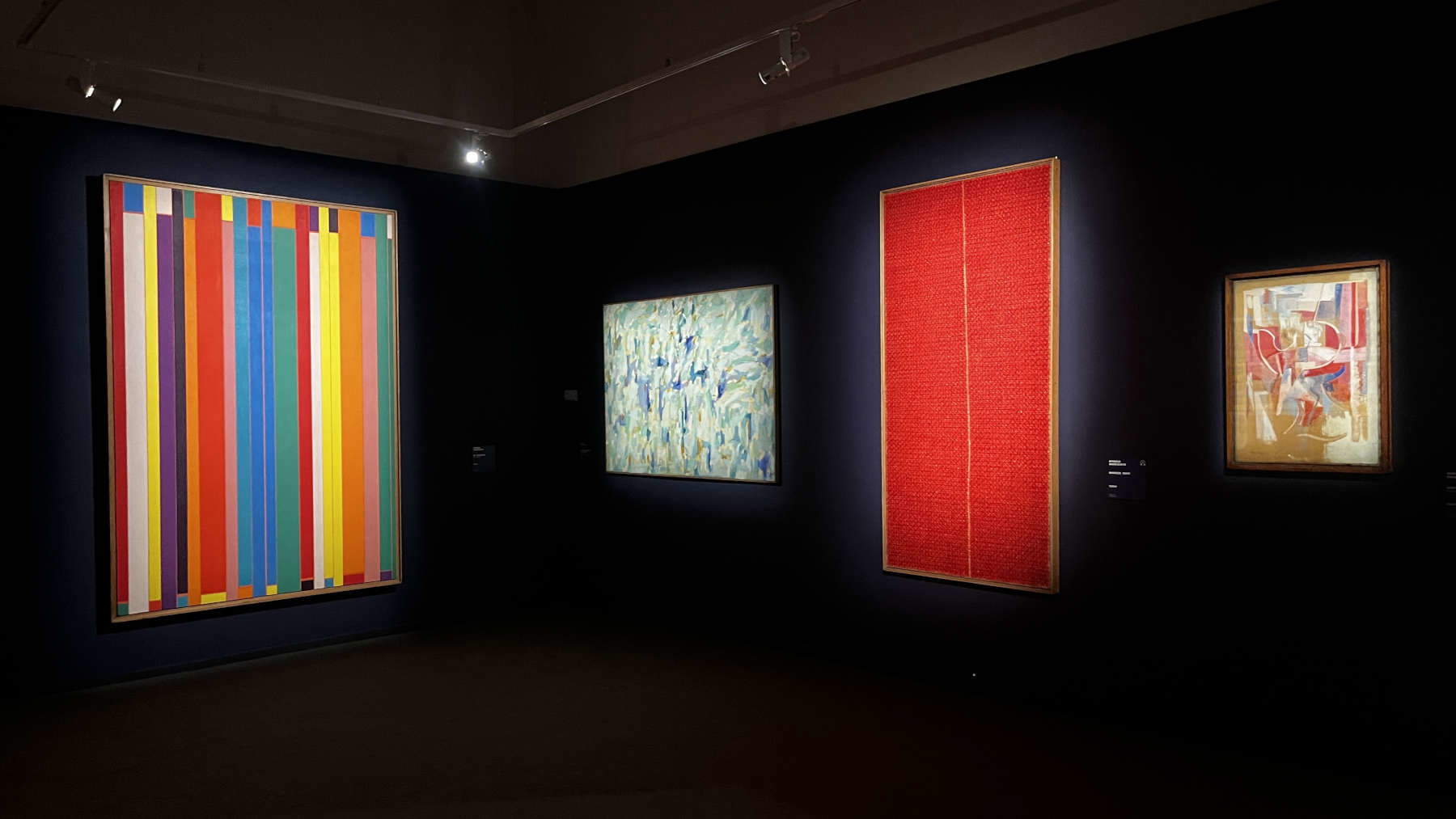Turin, at the Royal Museums an exhibition on postwar masters: masterpieces from GNAM on display
An exhibition dedicated to the masterpieces of the most important Italian artists of the post-World War II period opens in Turin, in the Sale Chiablese of the Royal Museums, from October 19, 2024 to March 2, 2025. The exhibition, entitled 1950-1970. Great Italian Art. Masterpieces from the National Gallery of Modern and Contemporary Art, produced in collaboration with the National Gallery of Modern and Contemporary Art in Rome (GNAM), presents an unprecedented set of 79 works, never before brought together outside the Roman venue. The event aims to offer the public an opportunity to rediscover the strength and originality of Italian art during a crucial period in the history of the 20th century.
The exhibition, produced by the Royal Museums and Arthemisia with the scientific contribution of GNAM, is curated by Renata Cristina Mazzantini, director of the National Gallery, and scholar Luca Massimo Barbero.
The exhibition project aims to recount an unrepeatable period of the Italian art scene. The post-World War II years were in fact animated by a group of exceptional artists whose works have now become milestones in modern and contemporary art. Superintendent Palma Bucarelli’s 30-year relationship with these artists in particular is highlighted, as is the inestimable wealth of GNAM’s collections, which played a leading role in the construction of the national artistic heritage.
The exhibition’s itinerary is divided into twelve rooms, each inviting visitors to discover the roots of what Barbero calls a true “telluric movement.” “It is an intense path,” says Luca Massimo Barbero, “and, in several rooms, it is a real hand-to-hand between the ’new masters’ of postwar Italian art, whose roots are explored here and, for the first time, it is possible to compare them outside the GNAM collection. For Italian art these are the germinal protagonists, today identified as the international interpreters of the then contemporary.” The intensity of the narrative journey lies precisely in these previously unseen dialogues, which explore the creative tensions of a time when Italian art reached international heights.
The exhibition opens with two emblematic works: Ettore Colla’s Rilievo con boltoni (1958-59) and Pino Pascali’s L’arco di Ulisse (1968), immediately marking the experimental and conceptual tone of the exhibition. Continuing on, a room entirely dedicated to Giuseppe Capogrossi offers visitors the chance to admire some of his masterpieces, including the monumental Surface of 1963. The theme of matter, crucial in the 1950s, is explored in a dedicated room, where two works by Lucio Fontana, both Spatial Concepts-Buchi, dialogue with Alberto Burri’s imposing Gobbo from 1950. The room also brings together works by Ettore Colla, Bice Lazzari and Mimmo Rotella, the latter represented by germinal works that anticipate his experimentation with décollage.
Another section compares two giants ofabstraction-Afro and Piero Dorazio, whose art had a significant impact overseas as well, contributing to the success of Italian art in the United States. At the heart of the exhibition, however, is the dialogue between Lucio Fontana and Alberto Burri, two key figures of the post-World War II period. Their eleven works on display, among which stand out are Concetto spaziale. Teatrino (1965) by Fontana and Burri’s Nero cretto G5 (1975), are placed in a direct comparison that enhances the diversity and complementarity of their artistic pursuits.
The creative ferment of Rome in the 1950s and 1960s is well represented by an enormous décollage by Mimmo Rotella from 1957, but also by the historical works of Giosetta Fioroni, Carla Accardi, Giulio Turcato and Gastone Novelli. They are joined by the works of artists such as Tano Festa and Sergio Lombardo, who were able to grasp and interpret the instances of the period with originality.
Among the most striking works is Franco Angeli’s black monochrome, which dialogues with Piero Manzoni’s Achromes, highlighting the minimalism and essentialism that characterized their research. Also testifying to the importance of contemporary art in the exhibition is Michelangelo Pistoletto’s famous mirror painting I visitatori and a section entirely devoted to Emilio Isgrò’s iconic Cancellature.
The exhibition culminates in a section devoted to Pino Pascali, a conceptual and desecrating artist whose works are a highlight of the entire exhibition. Prominent among the works on display are Ricostruzione del dinosauro (Dinosaur Reconstruction ) from 1966 and the famous Bachi da setola (Bristle Worms ) from 1968, which ideally close the itinerary.
 |
| Turin, at the Royal Museums an exhibition on postwar masters: masterpieces from GNAM on display |
Warning: the translation into English of the original Italian article was created using automatic tools. We undertake to review all articles, but we do not guarantee the total absence of inaccuracies in the translation due to the program. You can find the original by clicking on the ITA button. If you find any mistake,please contact us.





























